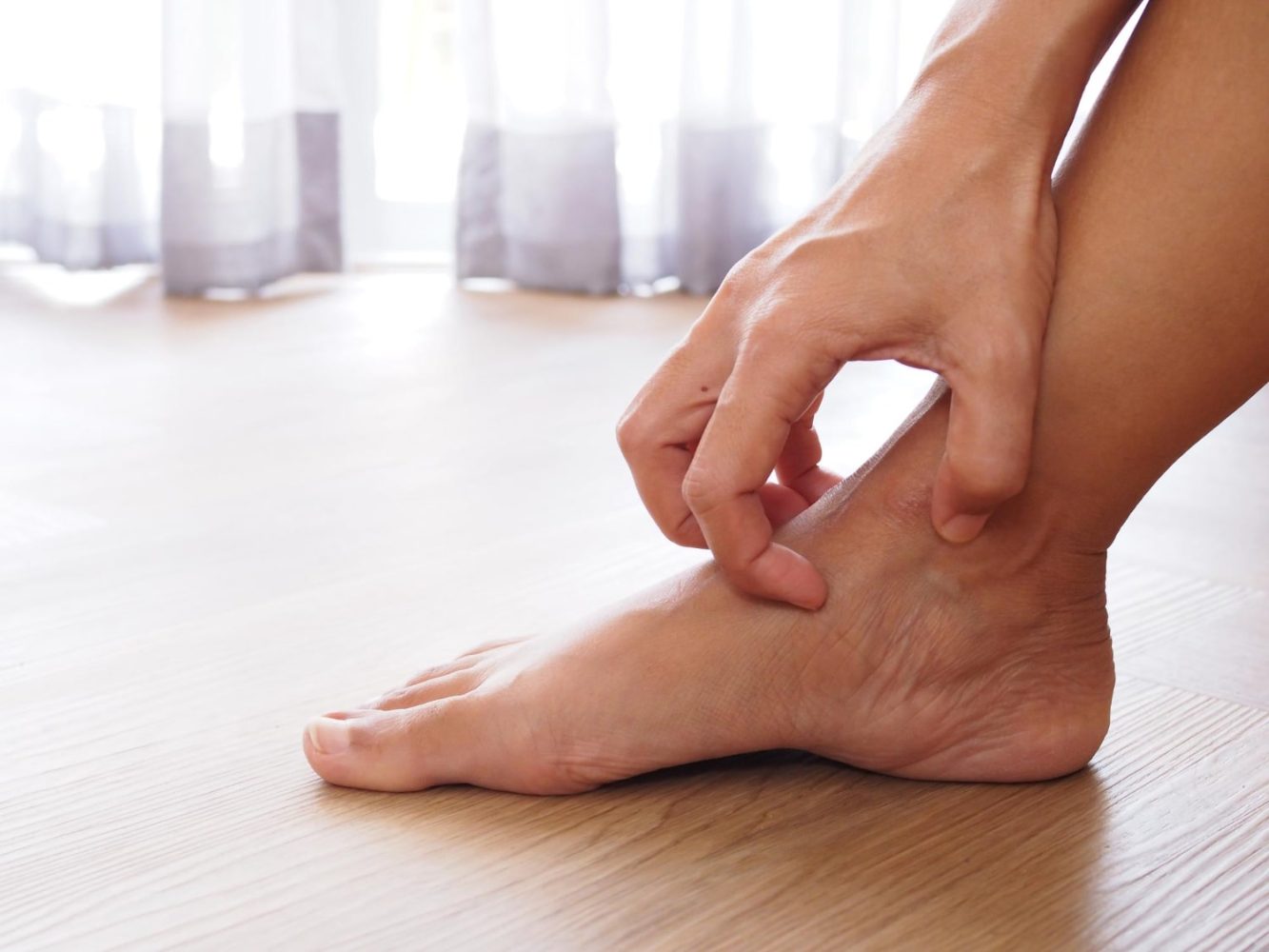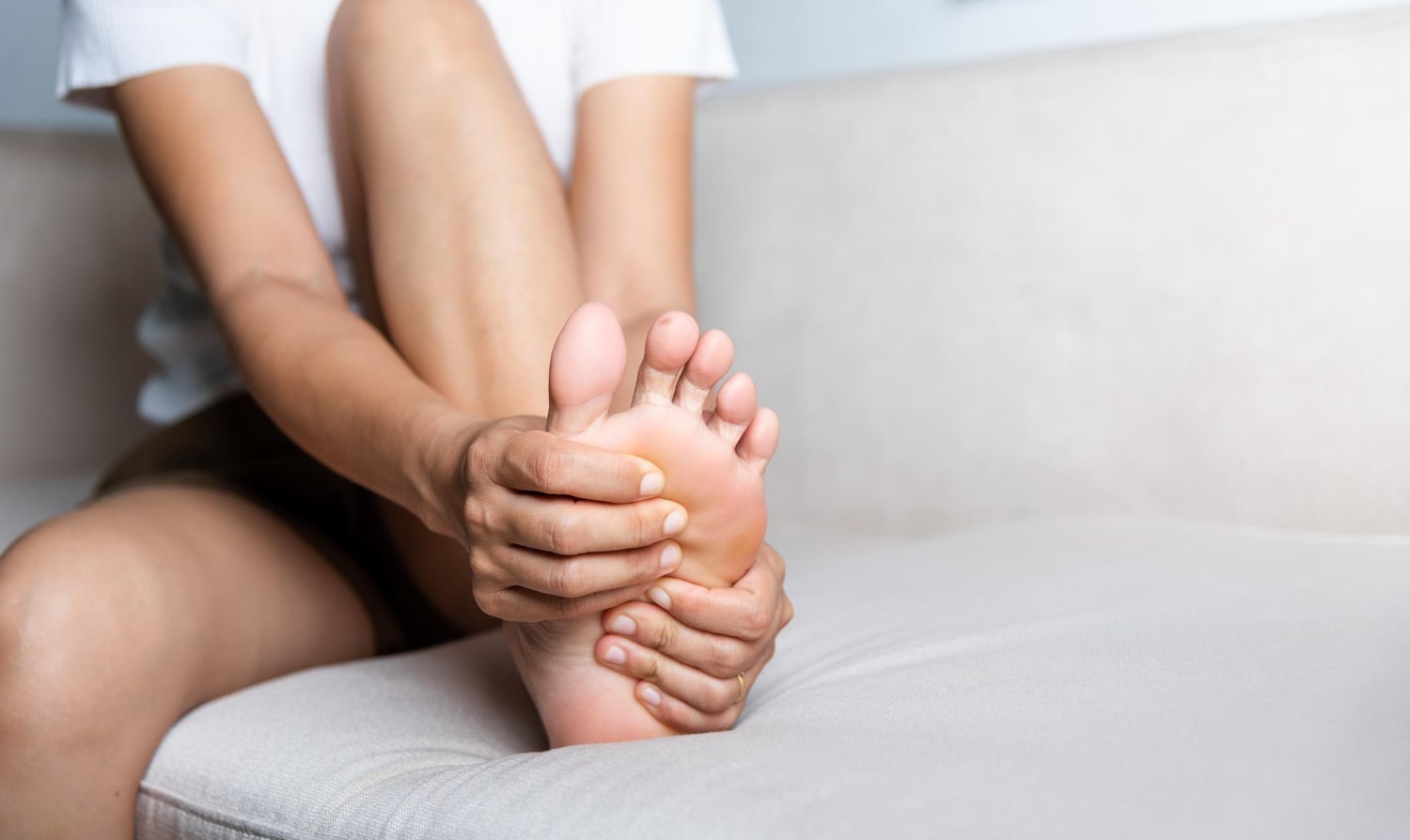The Link Between Itchy Feet and Diabetes
Persistent pruritus localized to the feet can be an early and clinically significant dermatologic manifestation of diabetes mellitus, particularly in patients with poorly controlled blood glucose levels. While often dismissed as benign, itching in the lower extremities may signal microvascular compromise, autonomic dysfunction, or evolving peripheral neuropathy—complications common in both type 1 and type 2 diabetes. Recognizing cutaneous signs like localized xerosis, neuropathic itch, or fungal superinfections is critical for clinicians, as these symptoms often precede more severe sequelae such as diabetic foot ulcers (DFUs). Given the high morbidity associated with DFUs, early dermatologic symptoms should not be overlooked in diabetic care protocols.
Can Diabetes Cause Itchy Feet?
Yes, diabetes can directly cause pruritus in the feet through a combination of metabolic, neurologic, and vascular mechanisms. Chronic hyperglycemia contributes to endothelial dysfunction and impairs peripheral circulation, particularly in the distal extremities. This ischemia reduces nutrient and oxygen delivery to the skin, resulting in xerosis and a compromised epidermal barrier. Simultaneously, diabetic peripheral neuropathy alters cutaneous nerve fiber density and function, leading to dysesthetic sensations such as itching, burning, or tingling. In many cases, these symptoms are compounded by autonomic neuropathy, which impairs sweat gland function and further exacerbates skin dryness. Collectively, these pathophysiological changes create a multifactorial etiology for localized itching in patients with diabetes.
What Does Diabetic Itching Feel Like?
Diabetic-related itching is typically described by patients as a persistent, non-relieving sensation of cutaneous irritation, often localized to the lower limbs, particularly the dorsal and plantar aspects of the feet. Unlike pruritus associated with dermatologic conditions such as eczema, diabetic itch often presents without overt erythema or rash in its early stages. Patients may report sensations ranging from mild tingling to intense burning or crawling, suggestive of small-fiber neuropathy. The discomfort may intensify at night due to reduced distraction and lower ambient temperature, which alters peripheral circulation. In advanced cases, the skin may exhibit excoriations, hyperkeratosis, or secondary lichenification due to chronic scratching, further increasing the risk of infection in an already immunocompromised host.
Why Do Your Feet Itch When You Have Diabetes?
The pathogenesis of pruritus in diabetic patients is multifactorial, primarily driven by chronic hyperglycemia-induced damage to the integumentary, nervous, and vascular systems. First, prolonged elevations in blood glucose impair microvascular perfusion, resulting in localized ischemia and impaired skin hydration, which promotes xerosis and barrier dysfunction. Second, diabetic sensorimotor polyneuropathy, especially involving small unmyelinated C-fibers, disrupts normal sensory input and may generate aberrant itch signals via spontaneous or misdirected neuronal firing. Third, autonomic neuropathy impairs sudomotor function, leading to anhidrosis in the feet and further contributing to dryness. Additionally, immune dysregulation associated with diabetes increases susceptibility to superficial infections—both fungal (e.g., tinea pedis) and bacterial (e.g., impetigo)—which can trigger inflammatory cytokine cascades and pruritogenic responses. This combination of neuropathy, ischemia, and inflammation forms the clinical basis for foot pruritus in the diabetic population.

How to Stop Itchy Feet from Diabetes
Managing diabetic foot pruritus requires a comprehensive, multidisciplinary approach targeting both the underlying metabolic dysregulation and the symptomatic manifestations. The following interventions are evidence-based strategies for mitigating diabetic foot itch:
Optimize Glycemic Control
Tight regulation of blood glucose levels remains the cornerstone of symptom reduction. Achieving target HbA1c goals (<7.0% in most patients) reduces microvascular complications and neuropathic progression, both of which contribute to pruritus.
Emollient Therapy
Regular application of high-urea or lactic acid-based moisturizers helps restore stratum corneum hydration and barrier integrity. Formulations free of alcohol and fragrances are preferred to avoid further irritation. Apply twice daily, avoiding inter-digital spaces.
Foot Hygiene and Care
Daily cleansing with lukewarm water and pH-balanced soap followed by thorough drying, particularly between toes, reduces microbial colonization and maintains skin health. Mechanical debridement of hyperkeratotic areas by a podiatrist may be indicated.
Topical Pharmacologics
For localized inflammation or infection, antifungal agents (e.g., clotrimazole, terbinafine) and mild topical corticosteroids (e.g., hydrocortisone 1%) can be used under clinical supervision. Prolonged steroid use is contraindicated due to risk of skin atrophy.
Neuropathic Symptom Management
When itching is neuropathic in origin, adjunct therapy with oral agents such as gabapentin, pregabalin, or duloxetine may be prescribed to modulate aberrant nerve activity.
Proper Footwear and Offloading
Shoes with adequate ventilation, arch support, and room for toe movement minimize frictional trauma and pressure points that may exacerbate itch or lead to blistering.
Early intervention with these modalities not only reduces discomfort but also helps prevent progression to more severe complications such as ulceration or secondary infection.
When to See a Doctor
Medical evaluation is warranted when diabetic foot pruritus becomes persistent, progressive, or refractory to standard at-home interventions. Clinicians should be consulted if itching is accompanied by signs of peripheral neuropathy—such as paresthesia, allodynia, or reduced protective sensation—or if visible dermatologic changes develop, including erythema, fissuring, ulceration, or exudate. Additionally, the emergence of nocturnal itch disrupting sleep, bilateral presentation with no clear dermatosis, or any indication of secondary infection (e.g., warmth, swelling, malodor) should prompt timely podiatry or dermatology referral. Early clinical involvement is critical to rule out evolving diabetic foot complications and to initiate targeted therapy that can preserve skin integrity and prevent amputation risk.
Preventing Itchy Feet in Diabetes
Preventing diabetic foot pruritus involves targeted interventions that address the underlying metabolic, neurologic, and dermatologic contributors. Key prevention strategies include:
Sustained Glycemic Control
Maintain target HbA1c through consistent use of antidiabetic medications, medical nutrition therapy, and physical activity to reduce systemic complications.
Daily Foot Surveillance
Perform visual inspection of the feet each day to identify early signs of dryness, fissures, erythema, or lesions that may indicate irritation or infection.
Dermatologic Protection
Use hypoallergenic, urea- or ceramide-based moisturizers daily to preserve epidermal hydration.
Avoid application between toes to reduce maceration risk.
Skin Irritant Avoidance
Limit exposure to hot water and abrasive soaps that disrupt the skin barrier.
Select pH-balanced cleansers and avoid alcohol- or fragrance-containing products.
Environmental Controls
Use indoor humidifiers during dry seasons to prevent transepidermal water loss.
Choose hypoallergenic laundry detergents to minimize contact dermatitis risk.
Appropriate Footwear
Wear well-ventilated, supportive shoes to reduce friction and pressure-related microtrauma.
Structured Foot Care Education
Engage patients in diabetes education programs that emphasize foot hygiene, skin care routines, and early symptom recognition to enhance compliance and outcomes.
Take Control with Feetsee: Your Daily Foot Health Companion
Given the high incidence of undetected pre-ulcerative conditions in diabetic individuals, integrating proactive monitoring technologies into daily care can dramatically reduce the risk of progression to severe complications. Feetsee is a clinically validated, FDA-registered thermal imaging device specifically engineered for home use by individuals with diabetes. It captures high-resolution thermal and optical data from both feet in under 30 seconds, detecting asymmetries in surface temperature that often precede visible inflammation or tissue breakdown. This allows for early identification of subclinical inflammation—a key predictor of diabetic foot ulceration. Feetsee’s HIPAA-compliant platform alerts both the patient and their care team when anomalies are detected, enabling timely medical intervention. For patients with limited mobility, vision impairment, or sensory loss, Feetsee offers an accessible, non-invasive method to close the gap between daily life and clinical oversight. Incorporating Feetsee into one’s diabetes management routine empowers patients with real-time, actionable insight—transforming passive monitoring into active prevention.
References:
https://www.niddk.nih.gov/health-information/diabetes/overview/preventing-problems/nerve-damage-diabetic-neuropathies
http://diabetesjournals.org/care/article/47/Supplement_1/S11/153937/1-Improving-Care-and-Promoting-Health-in
https://www.apma.org/patients-and-the-public/diabetes-awareness

Detect Early, Prevent Amputations
Diabetic foot ulcers (DFUs) lead to significant discomfort, pain, numerous amputations, and billions of dollars in healthcare costs each year.
